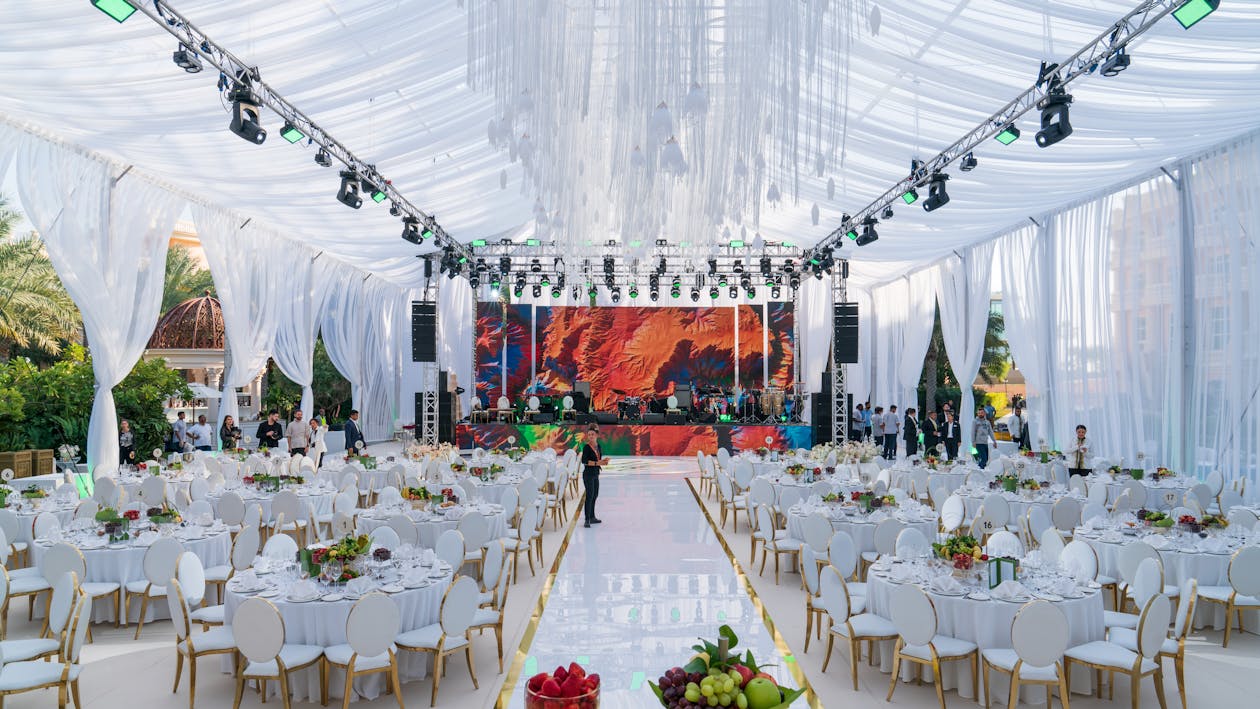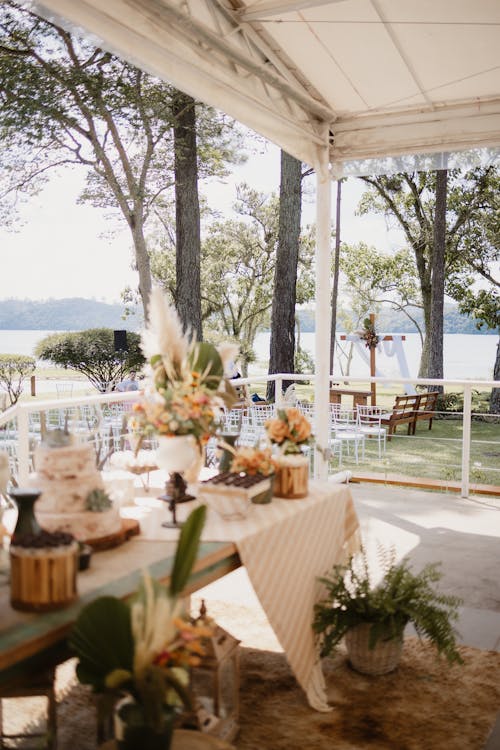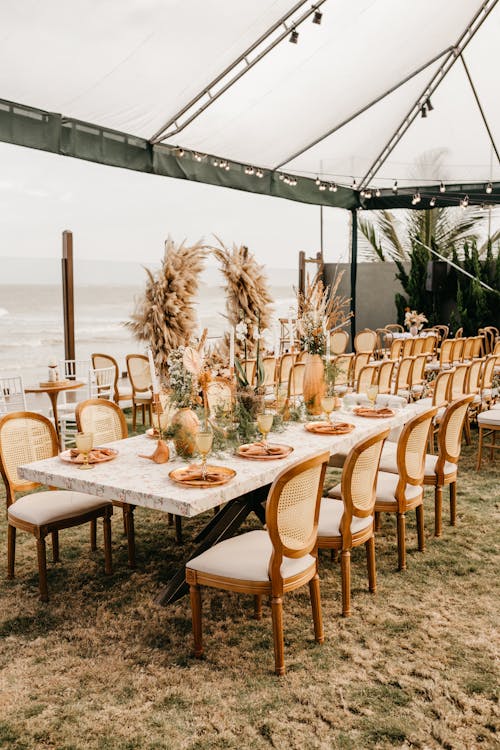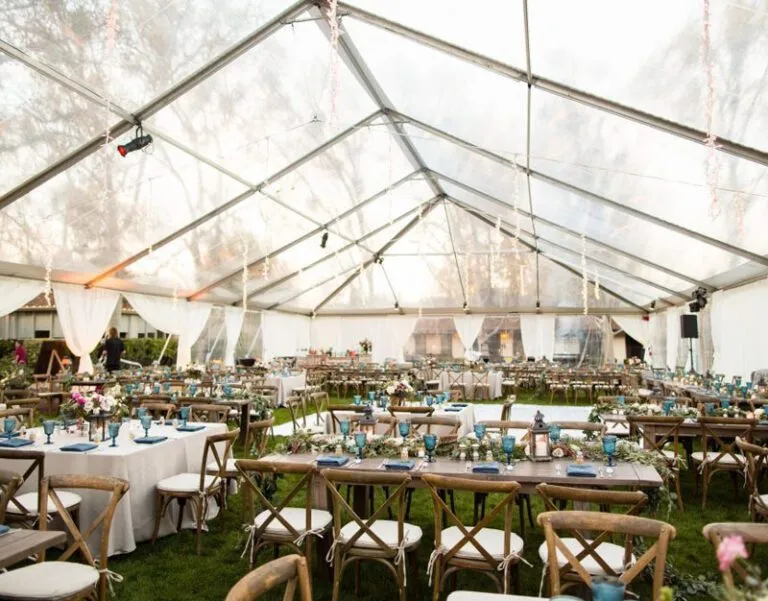Selecting the right tent size for your event can be challenging. This guide will help you determine the perfect tent dimensions for weddings, parties, and corporate gatherings. We’ll cover key factors influencing tent size, steps to calculate your needs, and typical sizes for various capacities. You’ll learn how to ensure comfort and functionality for your guests while staying within budget. By the end, you’ll be equipped to make an informed decision about your event’s tent size, including considerations for tarpaulin, tableware, catering, and entertainment areas.
Key Takeaways
- Tent size affects seating capacity, guest comfort, and overall atmosphere for event success
- Different event types require varying tent sizes based on activities and seating arrangements
- Accurate guest count estimation is crucial for selecting the right tent dimensions
- Online calculators, manual calculations, and professional consultations help determine appropriate tent sizes
- Budgeting for tent rentals involves considering size, style, additional features, and cost-saving strategies
Understanding the Importance of Tent Size for Events

Selecting the right tent size is crucial for event success. It affects seating capacity, guest comfort, and overall atmosphere. A well-sized tent accommodates all activities, from dining to dancing.
Different event types require varying tent sizes. A cocktail party needs less space than a seated dinner. Theatre-style seating allows for more guests in a smaller area. Consider these factors when choosing your tent:
| Event Type | Space Required (sq ft per person) |
|---|---|
| Cocktail Party | 8-10 |
| Seated Dinner | 12-15 |
| Theatre-Style | 6-8 |
Weather conditions also influence tent size decisions. In hot climates, extra space may be needed for air conditioning units. Always consult with rental professionals to ensure the perfect tent size for your event.
Key Factors Influencing Tent Size Selection

Selecting the right tent size depends on several key factors. These include estimating the number of guests, planning for various activities and layouts, and accommodating additional amenities. Each factor impacts the tent’s design, furniture arrangement, lighting needs, and climate control requirements. Understanding these elements ensures a well-sized tent for any event.
Estimating the Number of Guests
Accurate guest count estimation forms the foundation for selecting the right tent size. Event planners consider factors like seating arrangements, room for a photo booth, and space for trade show displays when calculating tent dimensions. Each chair requires a specific amount of space, and additional room is needed for comfortable movement between tables and activities. Proper estimation ensures ample space for all guests and event elements, contributing to a successful gathering.
Types of Activities and Layouts
Event activities and layouts significantly impact tent size requirements. A birthday party with games and a cake-cutting area needs more space than a simple gathering. Concrete flooring may be necessary for heavy equipment or dance floors. Event planners must consider the number of guests, heat management, and placement of essential items like food carts. Different layouts accommodate various activities:
- Banquet seating for formal dinners
- Theater-style for presentations
- Open floor plan for networking events
- Mixed layout for trade shows or exhibitions
Space for Additional Amenities
Event organizers must account for additional amenities beyond guest space when planning tent size. These include rain protection, kitchen areas, flooring, and ceiling height. A common rule of thumb suggests adding 10-15% extra space for these elements. Adequate room for catering stations, dance floors, and audiovisual equipment ensures a comfortable and functional event environment.
Steps to Determine the Right Tent Size

Determining the right tent size for events involves three key steps. Event planners can utilize online tools for quick estimates, manually calculate square footage for precise space requirements, or consult tent rental professionals for expert advice. These methods help ensure adequate space for weddings, receptions, and other gatherings, considering factors like guest count and layout needs.
Utilizing an Online Tent Size Tool
Online tent size calculators simplify the process of determining the right tent dimensions for events. Users input details such as guest count, seating style, and additional features like dance floors or buffet tables. These tools provide quick estimates, helping event planners create an initial budget and visualize the space. Some calculators even offer linen estimates for table settings, ensuring a comprehensive planning approach:
- Enter guest count and seating arrangement
- Add space for dance floor or other activities
- Include catering and buffet areas
- Estimate linen requirements
- Receive tent size recommendation and budget estimate
Manually Calculating Required Square Footage
Event planners can manually calculate the required square footage for tents by considering various factors. They start with the basic space needed per guest and then add extra room for aisles, ventilation, and wind protection. For banquet-style events, planners use space for tables, chairs, and a dance floor. They also account for catering areas, bars, and even space for shopping carts if needed. This manual method allows for precise customization based on specific event requirements.
Consulting With Tent Rental Professionals
Consulting tent rental professionals provides valuable insights for selecting the right tent size. These experts consider factors like party atmosphere, crowd control, and roof height to ensure a comfortable event space. They offer guidance on tent styles, layouts, and additional features that enhance the overall experience. Professionals can also provide a detailed breakdown of space requirements for various event elements:
| Event Element | Space Required (sq ft) |
|---|---|
| Dance Floor | 100-400 |
| Bar Area | 100-200 |
| Buffet Table | 100-150 |
| DJ Booth | 50-100 |
Typical Tent Sizes for Various Event Capacities

Tent sizes vary based on event capacity. This section covers ideal sizes for small gatherings, medium-sized events, and large functions. Understanding these options helps event planners choose the right tent size for any occasion, ensuring guest comfort and proper space allocation for activities.
Ideal Tent Sizes for Small Gatherings
Small gatherings typically require tent sizes ranging from 10’x10′ to 20’x20′. These compact tents accommodate intimate events such as backyard parties, small weddings, or family reunions. Event planners should consider the following factors when selecting a tent for small gatherings:
- Guest count (usually 10-50 people)
- Seating arrangement (cocktail-style or seated)
- Space for food and beverage stations
- Room for entertainment or activities
- Weather considerations (e.g., sidewalls for wind protection)
Recommended Sizes for Medium-Sized Events
Medium-sized events, typically hosting 50 to 150 guests, require tent sizes ranging from 20’x40′ to 40’x60′. These dimensions provide ample space for seating arrangements, dance floors, and catering stations. Event planners often choose frame tents or pole tents for these gatherings, depending on the venue and desired aesthetic. When selecting a tent for medium-sized events, organizers consider factors such as guest count, seating style, and additional features like stages or audiovisual equipment.
Best Options for Large Functions
Large functions with over 150 guests require spacious tents, typically 40’x80′ or larger. These tents accommodate extensive seating arrangements, multiple activity areas, and substantial catering setups. Event planners often choose clearspan structures for large events due to their versatility and ability to support heavy equipment. When selecting a tent for large functions, organizers consider the following factors:
- Total guest count and seating layout
- Space for dance floors and stages
- Areas for food stations and bars
- Room for audiovisual equipment
- Separate zones for different activities
Budgeting for Your Tent Rental
Budgeting for tent rentals involves considering various factors that affect costs. Event planners must account for tent size and style and additional expenses like lighting and flooring. Understanding these elements and implementing cost-effective strategies helps create a realistic budget for any event. This section explores key aspects of tent rental budgeting.
Factors Affecting Tent Rental Costs
Tent rental costs depend on several factors, including size, style, and duration of use. Event planners must consider the tent’s material, such as vinyl or canvas, and its structure type, like pole or frame tents. Additional features like sidewalls, windows, or clear tops also impact the overall price. The event’s location and season can affect rental fees, with peak times typically commanding higher rates. Understanding these factors helps event organizers create accurate budgets and make informed decisions when selecting the right tent for their needs.
Additional Expenses to Consider
Event planners must account for additional expenses beyond the basic tent rental cost. These include lighting, flooring, heating or cooling systems, and furniture rentals. Delivery and setup fees, permits, and insurance can also add to the total cost. Event organizers should factor in these expenses when creating their budget to ensure a comprehensive financial plan for their tent rental.
Strategies for Cost-Effective Tent Solutions
Event planners can employ several strategies to reduce tent rental costs without compromising quality. They can opt for off-peak season rentals, choose standard sizes over custom dimensions, and select simpler tent styles. Combining multiple events under one rental period or sharing tents with other nearby events can also lead to significant savings. Planners should consider these cost-effective solutions:
- Book early for better rates and availability
- Use in-house lighting and decor to reduce rental items
- Negotiate package deals for tents and accessories
- Explore alternative materials or structures for lower costs
- Optimize layout to minimize tent size requirements
Addressing Common Questions About Tent Sizes

This section addresses common questions about tent sizes for events. It covers recommendations for different guest counts, guidance on selecting appropriate tent styles, and tips for maximizing usable space inside tents. These insights help event planners make informed decisions and ensure optimal tent sizing for their gatherings.
Tent Size Recommendations for Different Guest Counts
Tent size recommendations vary based on guest count and event type. For intimate gatherings of 50 guests or fewer, a 20′ x 20′ tent often suffices. Medium-sized events with 100-150 guests typically require a 30′ x 60′ tent. Large functions hosting 200 or more attendees may need a 40′ x 80′ tent or larger. Event planners should consider the following factors when determining tent size:
- Number of guests
- Seating arrangement (banquet, cocktail, or theater-style)
- Space for food stations and bars
- Dance floor requirements
- Additional features like stages or photo booths
Determining the Appropriate Tent Style
Selecting the appropriate tent style depends on event location, duration, and aesthetic preferences. Frame tents offer versatility and stability, making them suitable for various surfaces. Pole tents provide a classic look with high peaks but require more space for support poles. Clear span structures offer unobstructed interiors, ideal for large corporate events or weddings. Event planners consider these factors when choosing a tent style:
- Event location and terrain
- Duration of the event
- Desired aesthetic and atmosphere
- Need for interior space flexibility
- Budget constraints
Tips for Maximizing Usable Space Inside the Tent
Event planners can maximize usable space inside tents by implementing strategic layout designs. They should consider using round tables instead of rectangular ones to optimize seating arrangements. Efficient placement of essential elements like dance floors, stages, and catering stations helps create a functional flow. Planners can also utilize vertical space for decorations and lighting to free up floor area. Here are some tips for maximizing tent space:
- Use modular furniture for flexible configurations
- Create multi-functional areas for different activities
- Implement clear walkways for easy guest movement
- Use hanging decor to save floor space
- Incorporate space-saving equipment like compact bars
Conclusion
Choosing the right tent size is crucial for event success, impacting guest comfort, atmosphere, and overall functionality. Factors such as guest count, event type, activities, and additional amenities play vital roles in determining the ideal tent dimensions. Utilizing online tools, manual calculations, or professional consultations helps event planners make informed decisions about tent sizes and styles. By carefully considering these aspects and implementing cost-effective strategies, organizers can create memorable events that perfectly balance space requirements with budget constraints.






